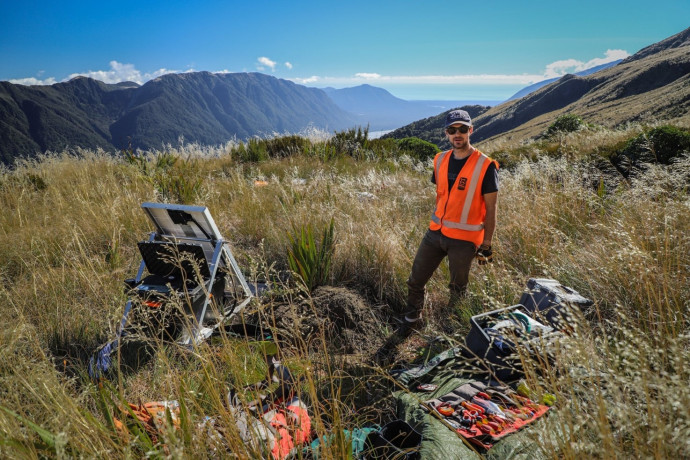Calum Chamberlain

2021: Dr Calum Chamberlain, Te Herenga Waka —Victoria University of Wellington, has been awarded a Rutherford Discovery Fellowship for research titled, ‘Probing the variability in earthquake nucleation mechanisms in New Zealand’
Published on 11 Whiringa-ā-rangi November 2021
Biography
Dr Calum Chamberlain is an earth scientist with a strong research focus on earthquake physics. He received his PhD in Geophysics at Te Herenga Waka —Victoria University of Wellington, where he is currently a Lecturer. Though early in his career, he has led and contributed to several funding awards, including a Marsden Fast-Start, a standard Marsden Grant, and a $13m MBIE Endeavour project. Dr Chamberlain was recently awarded a Te Herenga Waka Staff Excellence Early Career Researcher Award, and in 2020 was awarded the “Excellent Reviewer” award by the international journal Earth, Planets and Space.
In 2014, Dr Chamberlain was a recipient of the Jim Ansell Geophysics Scholarship awarded to “the student most likely to advance geophysics in New Zealand”. Dr Chamberlain is passionate about open-source software to enable robust, reproducible science. He has been a key leader in the open-source software package EQcorrscan, which in the last nine months has been installed 4,000 times.
Research Summary
How do earthquakes start? An understanding of the key signals that precede an earthquake has been elusive, but solving this mystery could help scientists forecast future earthquakes.
In Aotearoa and overseas, there are seismic records that offer clues. Some large earthquakes begin with periods of elevated seismic activity (foreshocks), others are accompanied by slow slip, a type of fault motion that is measurable, but mostly unfelt by people. These observations have led to two main views of earthquake initiation:
1) pre-slip, which is driven by every-day, often undetectable, fault movements; and
2) cascade, where each successive earthquake triggers others in random and unpredictable ways.
Still, the true cause of earthquakes remains complicated, as some are preceded by a hybrid of pre-slip and cascade signals, and others none at all.
Dr Chamberlain will research earthquake initiation processes by compiling extensive existing earthquake records from across Aotearoa. The recent occurrence of large earthquakes in Aotearoa, arising from well-understood but diverse geology, provides the ideal opportunity to examine earthquake initiation events. This analysis will stretch across the motu, complemented by a focused study of the Puysegur Subduction Zone (PSZ) – a region beneath Te Whakataka-kārehu-a-Tamatea Fiordland which hosts frequent large earthquakes. The PSZ has not been well studied due to its remoteness and the challenging mountainous terrain surrounding it. This fellowship provides a critical opportunity to deploy instrumentation to collect key data from the PSZ.
To understand the roles of pre-slip and cascade processes in earthquake initiation, Dr Chamberlain will examine and model data from slow slip earthquakes, foreshocks, and mainshock ruptures, from across Aotearoa. He will use state-of-the-art computational methods, and modern machine learning to construct a detailed understanding of earthquake locations, magnitudes, and faulting-styles.
This Rutherford fellowship provides a timely opportunity for Dr Chamberlain to make a significant contribution to the global scientific enigma of earthquake initiation, while improving our knowledge of earthquake hazards.
